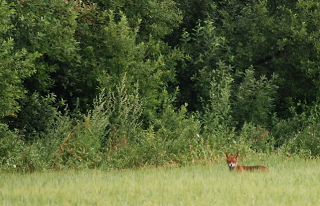Matthew Reinhart's Blog, page 13
June 30, 2011
Vintage Moveable Review: The Fisherman and the Demon
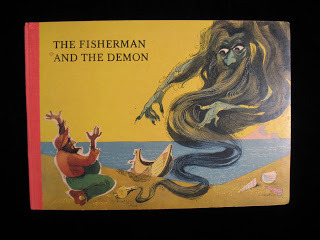

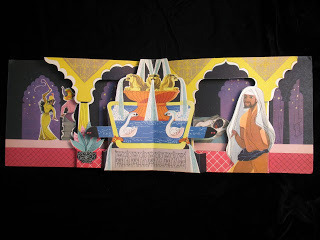
@font-face { font-family: "Cambria"; }p.MsoNormal, li.MsoNormal, div.MsoNormal { margin: 0in 0in 0.0001pt; font-size: 12pt; font-family: "Times New Roman"; }a:link, span.MsoHyperlink { color: blue; text-decoration: underline; }a:visited, span.MsoHyperlinkFollowed { color: purple; text-decoration: underline; }span.st { }div.Section1 { page: Section1; }
I have been working my way through a translation of Arabian Nights; getting lost in the tangle of ancient stories woven over a thousand and one nights. As a Western reader, I have found it difficult to appreciate this revered collection and its unfamiliar patterns of storytelling. I think that is why I have a certain love for this featured pop-up book, which singles out one of the more beloved stories from the intertwining tales.
In the early 1960's, the British publishers Bancroft and Co. teamed up with the massive state-owned publishing house Artia, based out of Prague to create a series of colorful pop-up books based on the Arabian Nights. Two illustrators, Frantisek Sklar and Jaroslav Beza came together to create vibrant renditions of these classic tales, but little is known about the collaboration or these artists.
Today, we are looking at The Fisherman and the Demon printed in Czechoslovakia in 1960. This hardcover landscape format book has two large pop-ups with simple pull tabs that serve as the front and rear endpapers with a six page color booklet bound inside. The paper engineering is very simple box layers with expressive artwork in line with Kubasta, who was creating books with Artia at the time. There is no record of who did the pop-up design for this series, so we must assume that there was someone creating it in-house for Artia. I won't go into much detail about the storyline, but I feel that buoyed by the wonderful art, this story stands up on its own. Now I have to keep my eye out for Sinbad, Aladdin and Ali Baba to complete my collection.
~Kyle
Weekly Beast: Dust Dragon
Similar to the komodo dragon of Indonesia but much larger, the dust dragon was the largest land dwelling lizard ever and probably fed mostly on giant wombats, flightless birds, and kangaroos of the time. As if it's size and teeth weren't formidable enough it may have also come equipped with a powerful paralyzing venom it could inject when biting its prey. Because it was still around until 40,000 years ago it probably snacked on the occasional human being too!
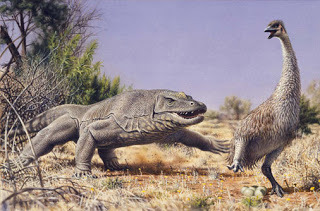
Word of the Day: Caterwaul
1. To make a harsh cry.
2. To have a noisy argument
noun;
1. A shrill, discordant sound.
Origin: Caterwaul is from Middle English caterwawen, "to cry as a cat," either from Medieval Dutch kater, "tomcat" + Dutch wauwelen, "to tattle," or for catawail, from cat-wail, "to wail like a cat".
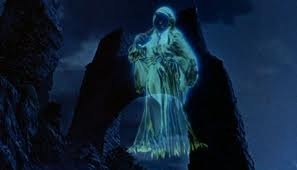
June 29, 2011
History Lesson: The Globe Theater Burns
The Globe was built in 1599 using timber from an earlier theater at another location, named simply The Theatre. It would eventually be rebuilt on the same site in 1614 but with the rise of the Puritans who frowned on plays and the theater in general, the new Globe would be closed in 1642 and demolished by 1644. It was never rebuilt. In 1997 a reconstruction was opened near the original site.

Word of the Day: Orotund
1. Characterized by fullness, clarity, strength, and smoothness of sound.
2. Pompous; bombastic.
Origin:
Orotund derives from Latin ore rotundo, "with a round mouth, hence "clear, loud," from os, oris, "the mouth" + rotundus, "round". It is also related to oral.

Artist Watch: Nadia Taylor
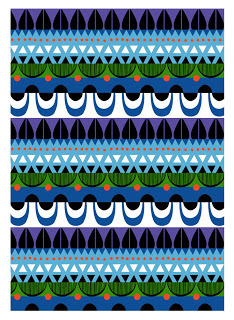


June 28, 2011
Whats Popped Up: Shelburne Museum
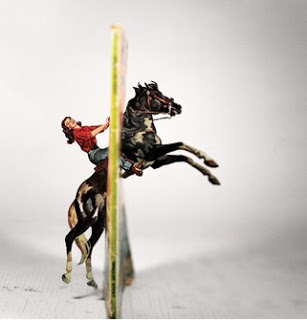
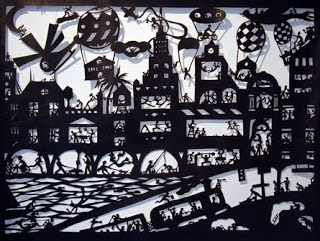
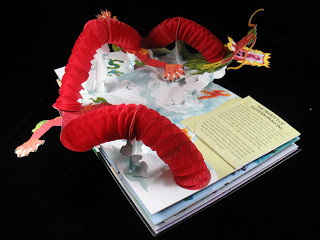
@font-face { font-family: "Cambria"; }p.MsoNormal, li.MsoNormal, div.MsoNormal { margin: 0in 0in 0.0001pt; font-size: 12pt; font-family: "Times New Roman"; }a:link, span.MsoHyperlink { color: blue; text-decoration: underline; }a:visited, span.MsoHyperlinkFollowed { color: purple; text-decoration: underline; }div.Section1 { page: Section1; }
The Shelburne Museum in Vermont has created an all-star exhibition of paper arts. It almost seems that the curators poked into my brain and complied all my favorite artists and crammed them into this exciting show titled, Paperwork in 3D .
In various spaces throughout the museum, two dozen contemporary artists at the top of their respective fields exhibit fine examples of dimensional papercraft. I am especially interested in the complex origami of Robert Lang; the intricate cut paper worlds of Beatrice Coron; the kinetic paper engineering of Matthew Schlian; the book manipulation of Brian Dettmer; and the fine photography of pulp novels by Tom Allen.
Closer to home, museum attendees can see the progression of pop-up book creations from paper engineers Matthew Reinhart and Sam Ita. From concept sketches to white prototypes; color art samples to final production materials, Reinhart's Chinese Lung from Dragons & Monsters comes roaring to life.
This amazing exhibit is on display until the end of October, so if you were looking for a summer vacation, look no further.
~Kyle
Word of the Day: Nonpareil
1. Having no equal; peerless.
noun
1. Something of unequaled excellence; a peerless thing or person.
2. A flat disk of chocolate covered with beads of colored sugar.
Origin: Nonpareil comes from Old French, from non, "not" + pareil, "equal," from (assumed) Vulgar Latin pariculus, diminutive of Latin par, "equal."

June 27, 2011
Word of the Day: Effloresce
1. To burst into bloom; blossom.
Origin: Effloresce combines the Latin roots ex- "out of", and florescere, "to blossom".
June 24, 2011
Word of the Day: Copse
1. A thicket or grove of small trees.
Origin:
Copse derives from Old French copeiz, " a thicket for cutting," from coper, couper, "to cut". It is related to coupon, at root "the part that is cut off".
